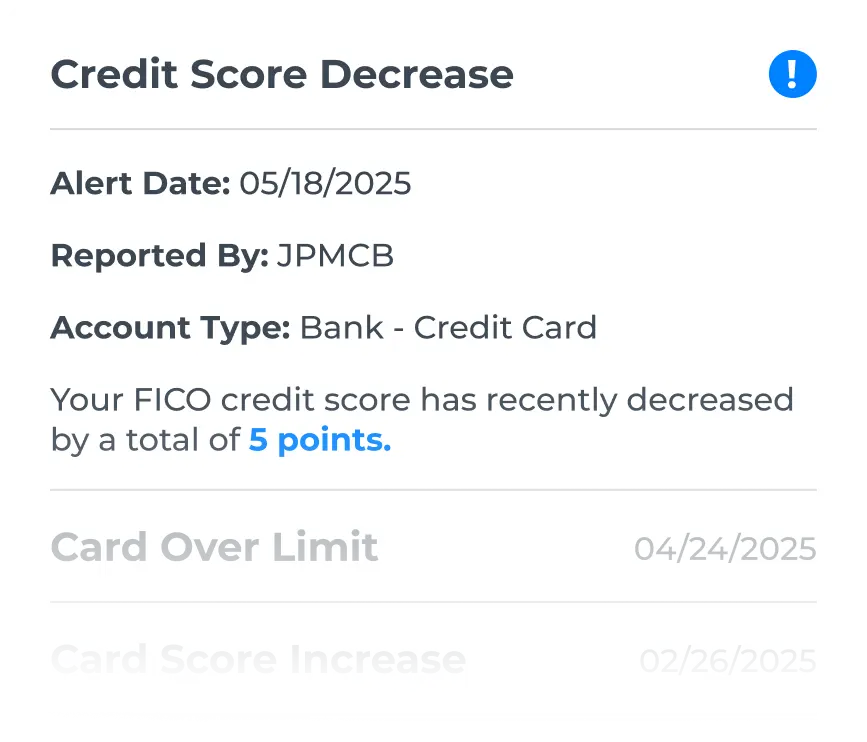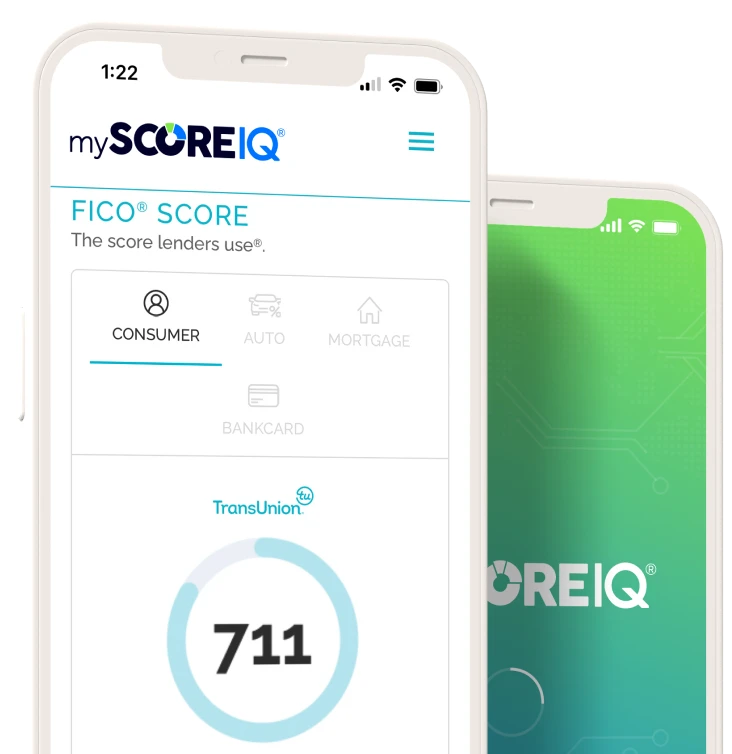Be Prepared. Know Your FICO® Scores.
FICO® Scores are used by 90% of top lenders1,3. Your credit scores help determine if you qualify for a loan and what interest rates you receive. Actively monitoring your credit allows you to stay on top of changes to your credit report, including possible suspicious activity. Know your FICO® Scores so you can apply with confidence!


Daily Monitoring
Active credit monitoring allows you to stay on top of your FICO® Scores. Receive daily monitoring and alerts for suspicious activity such as new credit inquiries, new loans, and delinquent accounts that are reported in your name.

Identity Theft Protection
Get identity theft protection with benefits including dark web monitoring, SSN monitoring, enhanced change of address notifications, and monitoring national and international criminal record databases for identity thieves committing crimes in your name.





Everything you need to Take Control of Your Credit & Identity
3-Bureau FICO® Scores & Reports
Get your FICO® credit scores and reports from the three major credit bureaus with clear insights into your credit profile and dedicated U.S.-based support.
Credit Monitoring
Stay protected with daily credit monitoring that alerts you to suspicious activity, new accounts, and report changes, so you can take action fast to stop criminals from wrecking your credit.
Identity Theft Monitoring
Protect your identity with Social Security Number monitoring, change-of-address notifications, dark web monitoring, and criminal record monitoring across national and international databases.
Fraud Restoration
Restore your identity with confidence with help from our 100% U.S.-based restoration support, including a dedicated case manager to help guide you every step of the way.
$1 Million ID Theft Insurance2
Get help and recover fast with up to $1 million in identity theft insurance, including reimbursement for stolen funds and coverage for lawyers, lost wages, personal expenses, and more.
FICO® Score Simulator
Plan ahead with our easy-to-use FICO® Score Simulator that lets you see how payments or financial decisions could impact your credit score.
Be Prepared. Be Confident.
Receive detailed reports, so you’re ready when you decide to apply for credit.
Choose the Plan That Puts You in Control
We offer 4 plans that include credit and identity theft monitoring.

Premier Credit Monitoring.
Receive premier credit monitoring and identity theft insurance for you and your family with our MAX plan.2






